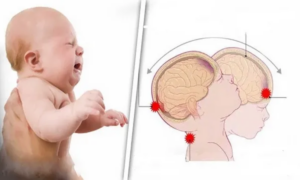Article Bites #38: Outcomes of Prehospital Chemical Sedation with Ketamine versus Haloperidol and Benzodiazepine or Physical Restraint Only
Article Summary by Angela Cornelius MD
Article:
Background:
Transportation of agitated patients is potentially dangerous for both patient and prehospital provider. In 2002 the National Association of EMS Physicians introduced their first position paper on prehospital agitated patient treatment which has been updated periodically since. [1] This statement addresses the practice of chemical restraint for prevention of injuries to patient and prehospital providers. Benzodiazepines with or without antipsychotic agents were the staple of prehospital chemical sedation until ketamine began to emerge in emergency medicine and prehospital literature. [2,3] Many papers have attempted to determine the best combination and dosing regimen, but consensus has yet to be reached. [4,5]
Methods:
The investigators performed a single center retrospective chart review of all patients transported with and received treatment for agitation from January 2014 to February 2018. During this time options for treatment were physical restraint only until November 2014 at which time intramuscular haloperidol and benzodiazepine (lorazepam or midazolam) were added and then in 2016 intramuscular ketamine was added. Patients who did not have medications administered for agitation and those who had restraints placed for noncombative patients by protocol were excluded. Also excluded were patients who were transported outside the medical system, patients whose emergency department clinical course could not be ascertained, and those who received haloperidol and benzodiazepines after ketamine had been was available. Descriptive and comparative statistics were performed.
Results:

Patients who received ketamine versus haloperidol and benzodiazepine were more likely to be intubated (11.6% vs 1.5%). They were also more likely to require additional medication or physical restraints for agitation compared to those who received haloperidol and benzodiazepine. The ketamine cohort had longer length of stays as compared to the physical restraints only cohort but was almost the same as for the haloperidol and benzodiazepine cohort. In the intubated ketamine group, no differences were found in demographics but there was a non-statistically significant tendency for these patients to have a co-ingestion and present between midnight and 6 AM. Of the ketamine patients who were intubated, 6 of 11 of the intubations were associated with the same EM provider.
How does this affect EMS?
This study adds to the body of literature surrounding prehospital sedation agents and dosing. The 4mg/kg of ketamine dosing in this study showed that there is still a significant percentage of patients who were intubated but much fewer than other studies so perhaps the optimal dosing is closer to 4mg/kg.
Bottom Line:
The optimal sedation agents and dosing for treatment of prehospital agitation are still unclear.
References:
1. Kupas DF, Wydro GC, Tan DK, Kamin R, Harrell IV AJ, Wang A. 10/17/2020 Clinical Care and Restraint of Agitated or Combative Patients by Emergency Medical Services Practitioners. The National Organization of State EMS Officials. https://nasemso.org/wp-content/uploads/Clinical-Care-and-Restraint-of-Agitated-or-Combative-Patients-by-Emergency-Medical-Services-Practitioners.pdf. Published October 2020. Accessed March 20, 2022.
2. Svenson JE, Abernathy MK. Ketamine for prehospital use: new look at an old drug. Am J Emerg Med. 2007;25(8):977-980. doi:10.1016/j.ajem.2007.02.040
3. Burnett AM, Salzman JG, Griffith KR, Kroeger B, Frascone RJ. The emergency department experience with prehospital ketamine: a case series of 13 patients. Prehosp Emerg Care. 2012;16(4):553-559. doi:10.3109/10903127.2012.695434
4. Isenberg DL, Jacobs D. Prehospital Agitation and Sedation Trial (PhAST): A Randomized Control Trial of Intramuscular Haloperidol versus Intramuscular Midazolam for the Sedation of the Agitated or Violent Patient in the Prehospital Environment. Prehosp Disaster Med. 2015;30(5):491-495. doi:10.1017/S1049023X15004999
5. Cole JB, Moore JC, Nystrom PC, et al. A prospective study of ketamine versus haloperidol for severe prehospital agitation. Clin Toxicol (Phila). 2016;54(7):556-562. doi:10.1080/15563650.2016.1177652
Edited and accompanying figure by James Li MD (@jamesli_17)



